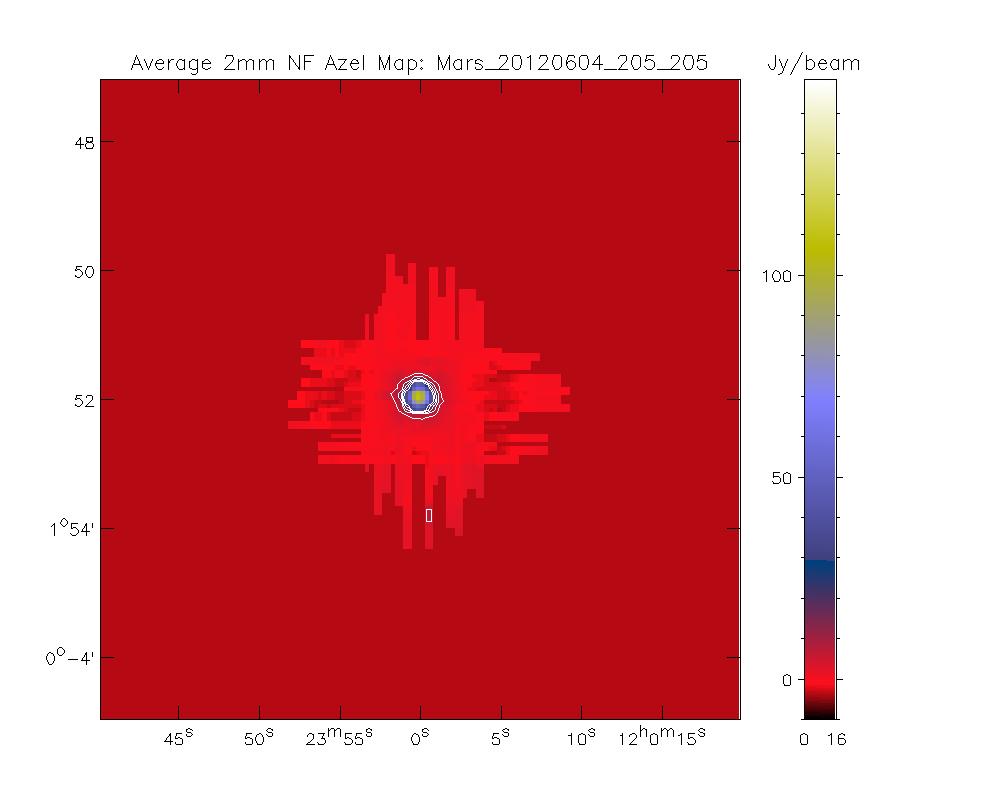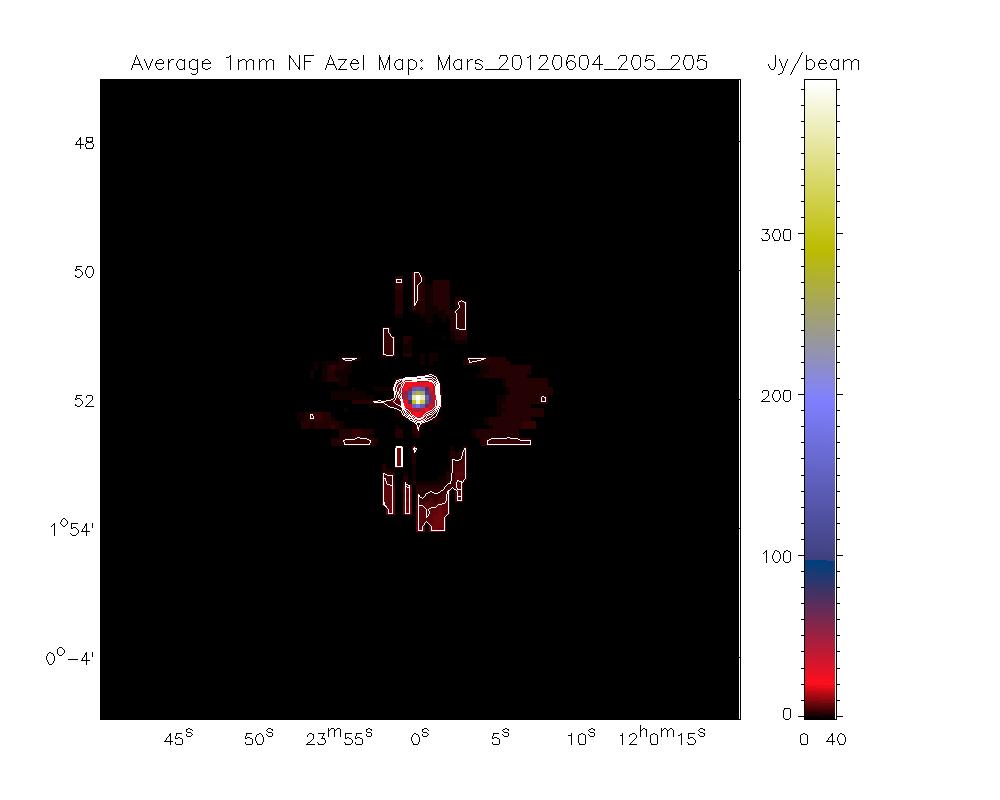|
Size: 2341
Comment:
|
Size: 2390
Comment:
|
| Deletions are marked like this. | Additions are marked like this. |
| Line 19: | Line 19: |
| The (faint) line is a simple Gaussian fit with a linear baseline which goes along nicely to the data points. The parameters of the fit are written on the plots and show 12 arcsecond FWHM at 1 mm. NB: The Off parameter must not be used directly for pointing corrections but it relates to where the pixel should be if the offset correction has been done. | The (faint) line is a simple Gaussian fit with a linear baseline which goes along nicely to the data points. The parameters of the fit are written on the plots (flux in Jy, coordinates and FWHM in arcseconds) and show 12 arcsecond FWHM at 1 mm. NB: The Off parameter must not be used directly for pointing corrections but it relates to where the pixel should be if the offset correction has been done. |
Cross and Focus analysis
FXD 4-Sept-2012
Back to the offline processing of NIKA run 4
Here we show some results on the cross and focus scans. We use the focal plane reconstruction by NP on the last scan of the run #168_20120604 in order to go further than simply analyzing one kid at a time.
Crosses on Mars
For example, one can remove/mask common glitches. One can also remove a common mode (obtained by summing all detector timelines after masking the source). One can also use the flux calibration of each kid obtained on the #168 scan. Here are some examples on one scan:
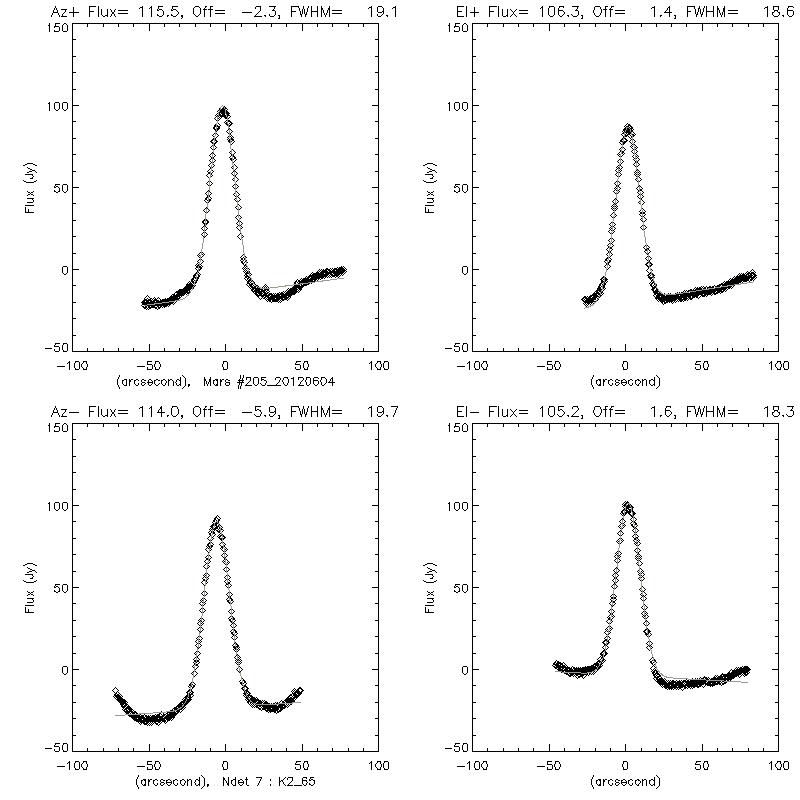
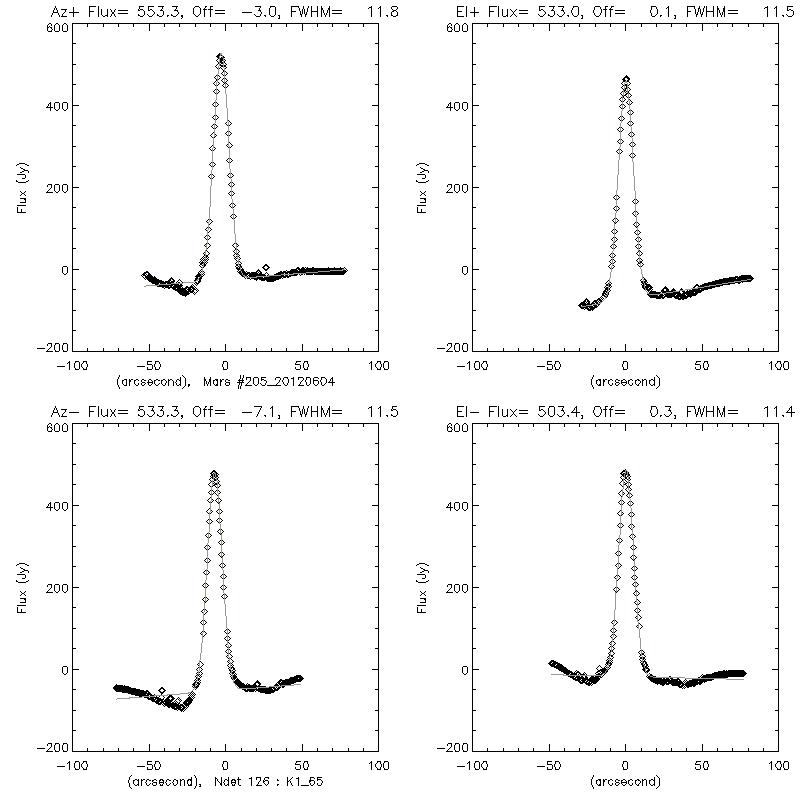
The (faint) line is a simple Gaussian fit with a linear baseline which goes along nicely to the data points. The parameters of the fit are written on the plots (flux in Jy, coordinates and FWHM in arcseconds) and show 12 arcsecond FWHM at 1 mm. NB: The Off parameter must not be used directly for pointing corrections but it relates to where the pixel should be if the offset correction has been done.
One can also construct a film of the Mars crossing. Here are 3 crossings at the 2 wavelengths.
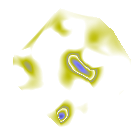

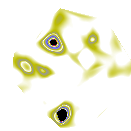
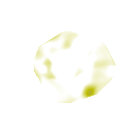
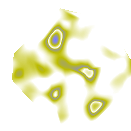

The instantaneous map is in Nasmyth coordinates. The real crosssing speed in AzEl is 10 arcsecond per second. The film is accelerated by a factor 5. Some apparent jumps in some legs of the crossing are due to missing pixels. Note a possible optical ghost at 2mm, to be investigated.
One can even make a map by cumulating the measurements of all kids:
